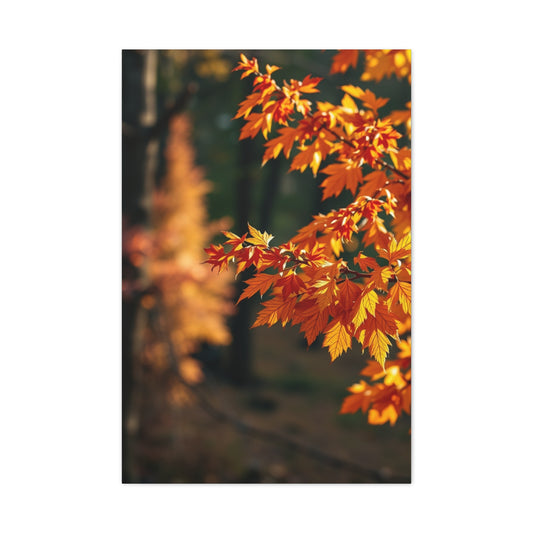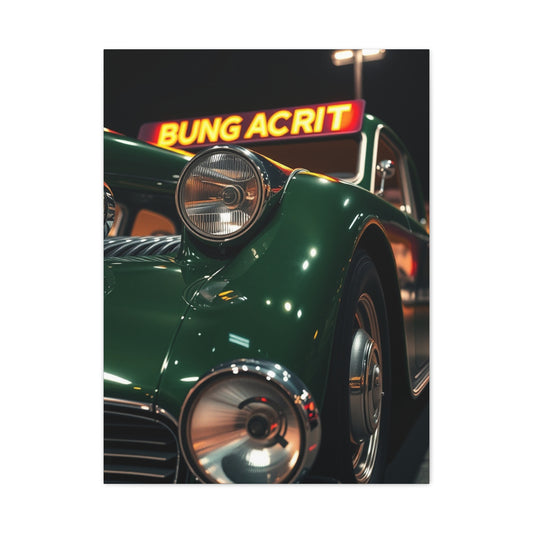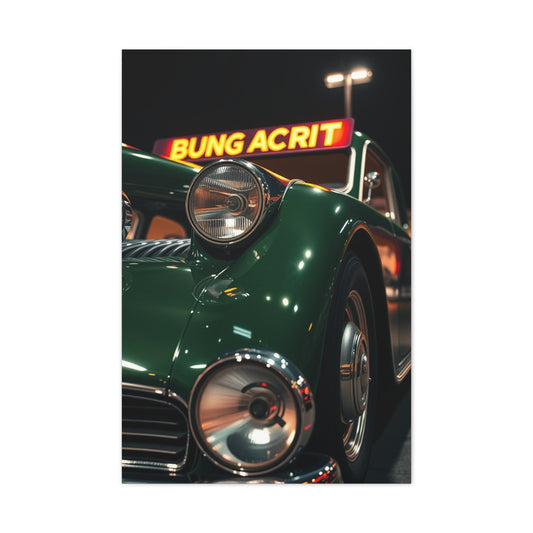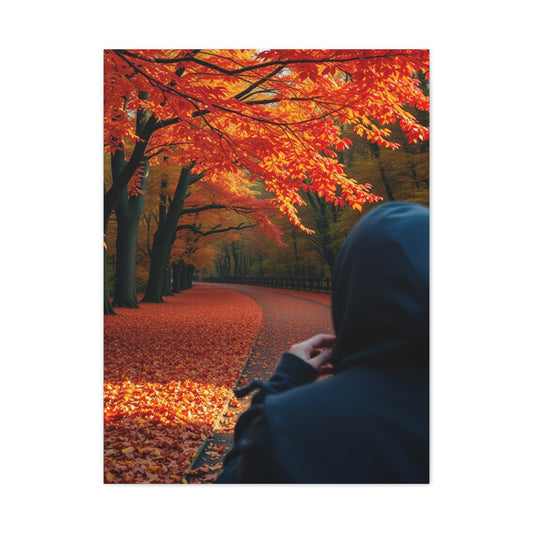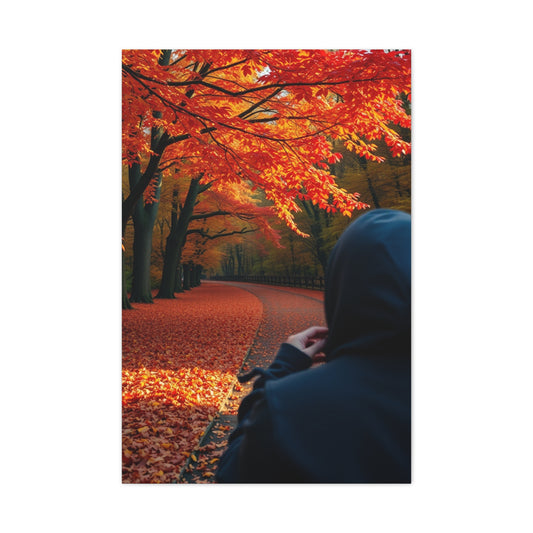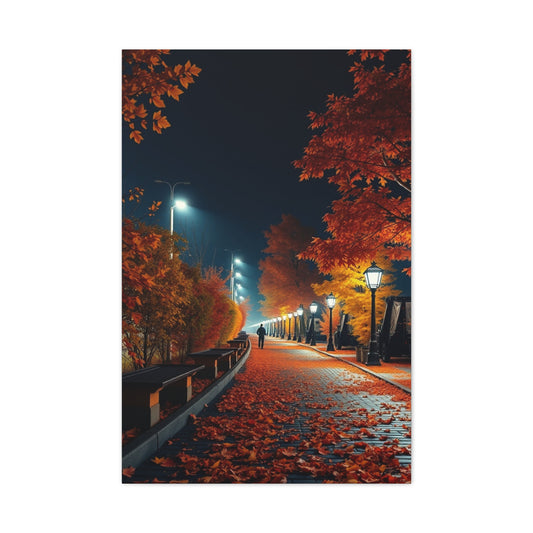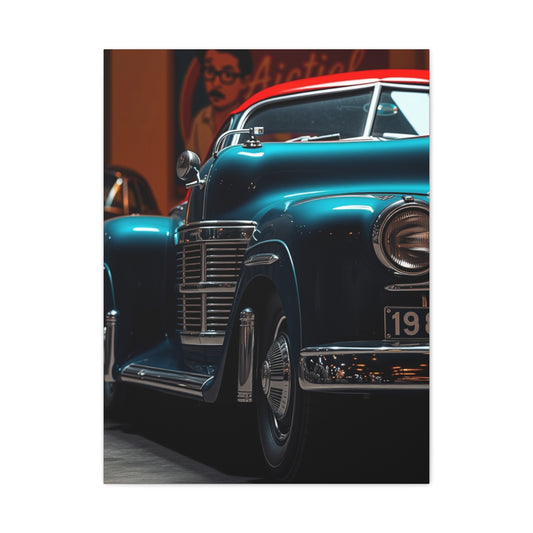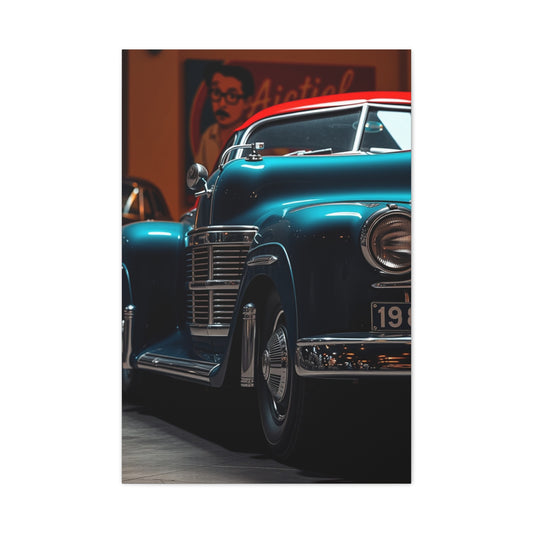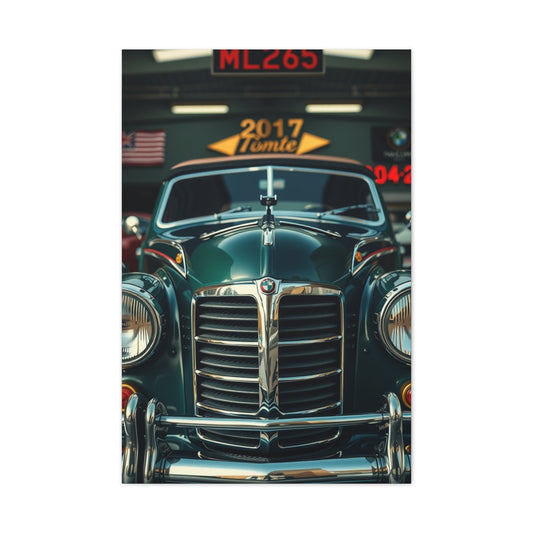Modern wall art offers an effortless way to redefine interiors, combining creativity, color, and texture to transform any space. From geometric panels to mandala-inspired designs, contemporary pieces create both aesthetic appeal and emotional resonance. Thoughtfully selected and strategically placed, modern wall art enhances mood, guides perception, and elevates the character of your home while reflecting personal style.
Modern Wall Art: Transforming Interiors
Modern wall art is a powerful tool in contemporary interior design, offering both aesthetic allure and a transformative influence on a space. The visual landscape of a room can shift dramatically with the introduction of a thoughtfully chosen piece. Unlike structural renovations, which require significant time and resources, wall art provides a flexible and cost-effective means of revitalizing interiors. Contemporary prints range from the audacious abstractions that capture the eye to restrained minimalist designs that exude sophistication. This spectrum allows homeowners and designers alike to inject personality and modernity into living spaces without overwhelming existing decor.
The Essence of Modern Wall Art
Modern wall art is defined by its fluidity and versatility. Unlike traditional artwork, which often adheres to strict representational norms, contemporary pieces embrace abstraction, geometric forms, and innovative visual language. This makes them ideal for a variety of interiors—from minimalist sanctuaries to eclectic living rooms. The essence lies in creating harmony between a piece and its surrounding environment. A single canvas can become the nucleus of a room, influencing furniture placement, lighting choices, and even the selection of supplementary decorative elements.
Minimalism within modern wall art emphasizes negative space, subtle textures, and muted color palettes. Typography-based art, featuring concise and impactful wording, can convey meaning while maintaining visual elegance. In contrast, bold abstract strokes, dynamic compositions, and unexpected color juxtapositions provide energy and a sense of movement. The interplay between restraint and audacity allows modern wall art to serve multiple roles: as an aesthetic centerpiece, a subtle accent, or a narrative device within an interior.
Contemporary Art Styles and Their Applications
The modern art landscape is diverse, encompassing multiple styles that cater to distinct tastes and functional requirements. Among these, abstract art remains a perennial favorite due to its adaptability and emotional resonance. Abstract forms, often comprising asymmetrical shapes, gestural strokes, and layered textures, provide a platform for interpretive engagement. The observer can perceive multiple narratives and emotions within a single work, which enhances its dynamic quality in a domestic setting.
Minimalist wall art is another cornerstone of contemporary design. Characterized by geometric simplicity, restrained color palettes, and understated motifs, minimalist art is ideal for creating an atmosphere of calm and sophistication. These pieces allow other design elements—furniture, textiles, and lighting—to harmonize without visual competition. By emphasizing form over detail, minimalism cultivates an environment of clarity and focus, appealing to those who favor tranquility over ornamental excess.
Typographic wall art offers a different dimension. Whether rendered in crisp modern fonts or hand-lettered styles, textual art communicates messages directly and aesthetically. It can serve motivational, philosophical, or whimsical purposes while doubling as a design element. Definition-inspired pieces or single-word statements are especially effective in transitional spaces such as hallways or entryways, where visual brevity complements functional circulation.
Integrating Wall Art into Home Interiors
The successful integration of modern wall art requires consideration of spatial dynamics, color harmony, and thematic coherence. Placement is pivotal: art should interact with the room’s architecture, furniture layout, and lighting to maximize its impact. Large-scale canvases, for instance, demand walls with ample vertical and horizontal space. Their presence can redefine the visual hierarchy of a room, establishing the piece as a focal point around which other elements orbit.
Lighting is equally crucial. Natural light can accentuate texture, depth, and color saturation, whereas carefully positioned artificial light can highlight contours and emphasize the artwork’s intended mood. Adjustable track lighting, spotlights, and ambient fixtures allow for precise control over illumination, creating visual drama or subtle enhancement depending on the desired effect.
Color selection within wall art also plays a significant role in shaping spatial perception. Monochromatic palettes, soft neutrals, or subdued pastels lend serenity, whereas bold primaries, jewel tones, or complementary contrasts infuse energy. The chosen scheme should resonate with the existing decor while also offering the potential for evolution as interiors are refreshed.
The Psychology of Modern Wall Art
Art is not merely decorative; it carries psychological weight. Contemporary wall art influences mood, fosters creativity, and can even enhance cognitive engagement. Abstract forms, by virtue of their interpretive nature, stimulate imagination and encourage introspective thought. Minimalist compositions can induce relaxation and mental clarity, serving as visual anchors in high-traffic or multifunctional spaces.
Colors evoke emotional responses as well. Blues are associated with calm and reflection, reds with energy and passion, and yellows with optimism. A judiciously placed artwork that employs these hues can subtly shape the ambiance of an interior. In essence, wall art functions as both an aesthetic and emotional conduit, transforming rooms into spaces that resonate with occupants on multiple levels.
Choosing the Right Modern Wall Art
Selecting modern wall art requires a balance between personal expression, spatial context, and aesthetic cohesion. Start by considering the room’s purpose and character. Living areas often benefit from vibrant, engaging pieces that spark conversation, while bedrooms may favor subdued compositions that encourage restfulness. Consider scale carefully: small canvases risk being overlooked in expansive rooms, whereas overly large pieces may overwhelm compact spaces.
Texture and medium also contribute to impact. Oil paintings offer rich depth and tactile complexity, acrylics deliver crisp clarity, and mixed-media works introduce unexpected layers of intrigue. Prints on canvas or paper can provide affordability and flexibility without compromising visual sophistication. Framing choices, too, can accentuate or temper the artwork, with minimalist frames complementing sleek interiors and ornate frames adding contrast to sparse environments.
The Role of Abstract Art
Abstract art remains a cornerstone of modern interiors due to its universality and interpretive richness. It often employs non-representational shapes, gestural brushstrokes, and unconventional color combinations, creating visual tension that captivates attention. Abstract pieces function effectively in both neutral and bold environments, offering the flexibility to blend or stand out.
These artworks are particularly effective for communal spaces. Their ambiguity allows diverse audiences to engage without imposing specific narratives. They also lend themselves to thematic exploration, where color, form, and texture can resonate with broader design motifs such as mid-century modern, industrial, or Scandinavian-inspired interiors.
Minimalism and the Power of Restraint
Minimalist modern wall art relies on the power of restraint. By paring down forms, reducing color complexity, and emphasizing negative space, minimalist works cultivate a sense of sophistication and quietude. This style is particularly well-suited for interiors that prioritize functionality, clean lines, and uncluttered visual fields.
Beyond aesthetics, minimalism can influence psychological perception of space. Rooms with minimalist wall art often feel larger, airier, and more organized. This effect can be amplified by incorporating neutral tones and subtle gradients, which provide visual continuity while maintaining an understated elegance. Minimalism, therefore, is both a stylistic and functional approach, bridging art and spatial design seamlessly.
Typography and Word-Based Art
Typography-based art adds a literary dimension to modern interiors. Words, phrases, or definitions are presented as visual focal points, blending linguistic meaning with design. This approach introduces narrative content into spaces, encouraging reflection, motivation, or whimsy depending on the chosen text.
Typography’s versatility lies in font, size, color, and composition. Bold sans-serif fonts convey modernity and assertiveness, while cursive or hand-lettered styles evoke warmth and individuality. Layout choices, such as centered alignment, asymmetrical placement, or multi-line stacking, further refine the artwork’s interaction with surrounding elements. These pieces can be scaled for large walls or positioned strategically in intimate settings like reading nooks or entry corridors.
Shapes, Panels, and Innovative Formats
Modern wall art is no longer confined to singular rectangular canvases. Multi-panel arrangements, including diptychs, triptychs, and larger modular compositions, allow for dynamic visual storytelling. Each panel can interact with its neighbor, creating rhythm, continuity, or deliberate visual disruption.
Unconventional shapes, such as hexagons, circles, or abstract geometric silhouettes, challenge traditional presentation norms and inject novelty into interiors. These formats are particularly effective in open-concept living areas or transitional spaces, where irregular shapes can break monotony and draw attention without overpowering other design elements.
Integrating Color Schemes
Color coordination between wall art and interior elements is essential for cohesive design. Contemporary art frequently explores complementary and contrasting palettes to achieve visual tension and harmony simultaneously. A bold, primary-colored piece can animate a neutral-toned room, while subdued or analogous colors reinforce a calm, unified ambiance.
Dynamic color schemes, such as color-blocking or gradient transitions, add contemporary flair. These approaches allow for experimentation without compromising balance, providing the opportunity to align art with textiles, furniture finishes, or accent lighting. The interplay between artwork and surrounding hues transforms walls into immersive, visually compelling environments.
Contemporary Themes and Inspirations
Modern wall art often draws inspiration from a range of sources—geometric abstraction, natural forms, digital aesthetics, and cultural motifs. The convergence of these influences allows for eclectic yet coherent visual narratives. Incorporating elements from nature, such as organic textures or botanical motifs, can soften stark interiors, while geometric abstraction emphasizes structure and symmetry.
Cultural motifs, whether traditional patterns reimagined with a contemporary twist or modern interpretations of mandalas, create depth and narrative intrigue. The thematic richness of modern art ensures that it is not merely decorative but also intellectually and emotionally engaging.
The Balance Between Art and Space
Achieving harmony between wall art and interior space requires thoughtful consideration of scale, placement, and context. Art should enhance, rather than compete with, its surroundings. Strategic placement above seating areas, consoles, or architectural features allows pieces to anchor rooms and guide visual flow.
The rhythm of a room can be modulated through the repetition of visual elements within wall art. Complementary textures, recurring shapes, and intentional asymmetry create cohesion, ensuring that art integrates seamlessly into the broader design scheme.
Embracing Individuality
Ultimately, modern wall art serves as a reflection of personal taste, values, and aesthetic sensibility. Whether through bold abstractions, minimalist compositions, or word-based creations, art provides a vehicle for self-expression within domestic or professional spaces. This capacity for personalization is central to contemporary design philosophy, where interiors are not simply functional environments but also manifestations of identity.
By exploring the interplay of color, texture, shape, and narrative, modern wall art transforms interiors into curated experiences. It encourages engagement, evokes emotion, and establishes dialogue between the space and its inhabitants. Every carefully selected piece becomes more than decoration; it becomes a statement of intent, a source of inspiration, and a visual anchor around which life unfolds.
Oversized Modern Wall Art: Making a Statement
Oversized modern wall art transforms interiors with an immediacy and gravitas that smaller pieces rarely achieve. Large canvases serve as the visual anchor of a space, dictating the room’s rhythm, atmosphere, and focal hierarchy. They are particularly effective in expansive living areas, lofts, and open-plan environments, where walls are often left blank and vast expanses can feel cold or unfinished. By occupying significant portions of a wall, oversized pieces draw the eye, creating both drama and intimacy in otherwise impersonal spaces.
The allure of large-scale artwork lies in its ability to influence spatial perception. A substantial canvas can visually expand a room, elongate ceilings, or emphasize architectural features. Its presence compels the viewer to engage physically, inviting closer inspection and interaction with textures, brushwork, and details that might be overlooked in smaller formats.
Selecting the Right Scale
Choosing the appropriate size for oversized wall art requires careful consideration of both wall dimensions and room function. A piece that is too large can overwhelm the space, creating imbalance and visual tension. Conversely, one that is too small may appear lost, failing to capitalize on the dramatic potential of scale. Designers often use the “two-thirds rule,” where the width of the artwork is approximately two-thirds of the furniture or wall it accompanies. This proportion ensures harmony while maintaining the commanding presence characteristic of oversized art.
Height also plays a pivotal role. Tall canvases complement rooms with high ceilings, drawing the eye upward and accentuating vertical space. Wide horizontal pieces, on the other hand, work well above sofas, consoles, or beds, emphasizing linearity and cohesion. Multi-panel formats, including triptychs and polyptychs, allow for expansive visual storytelling while preserving proportional balance.
Multi-Panel and Modular Designs
Multi-panel arrangements are a hallmark of contemporary large-scale art. Diptychs, triptychs, and larger modular compositions fragment a single visual narrative into multiple sections, adding rhythm, dynamism, and architectural interest. Each panel can be interpreted independently, yet collectively they create continuity and coherence.
These modular layouts are particularly useful for irregular or elongated walls. Panels can be spaced strategically to complement other design elements, such as windows, lighting fixtures, or shelving units. The flexibility of this format allows homeowners to experiment with alignment, asymmetry, and spatial dialogue, making the art an interactive component of the interior rather than a static decoration.
Gallery Walls: Curating Collective Impact
A gallery wall transforms a blank surface into a curated visual ecosystem, where multiple pieces coexist in dialogue with one another. While often associated with smaller prints, gallery arrangements can also incorporate oversized works as focal anchors. Surrounding smaller canvases or framed prints create layers of interest, establishing a hierarchy that guides the observer’s gaze.
Curating a gallery wall involves more than random placement. Consideration of scale, color, frame style, and thematic resonance ensures cohesion. Visual rhythm can be achieved through repetition of color tones, shapes, or motifs, while asymmetry introduces energy and prevents monotony. The result is a dynamic tapestry that embodies both individuality and curated sophistication.
Color Dynamics in Oversized Art
Color selection is paramount in large-scale wall art. Bold, saturated tones provide immediacy and presence, commanding attention and energizing a room. Conversely, muted or monochromatic palettes emphasize subtlety, texture, and form, allowing architectural features and surrounding furniture to shine.
Complementary colors can heighten visual contrast, while analogous hues foster harmony. Designers often experiment with color-blocking techniques, where adjacent color fields create geometric precision and modern appeal. In contemporary interiors, color within oversized pieces not only defines aesthetic identity but also modulates emotional ambiance, influencing energy levels, tranquility, or vibrancy.
Texture and Materiality
Oversized wall art introduces a tactile dimension to interiors. Canvas textures, layered acrylics, and oil impastos add depth, casting shadows and reflecting light in ways that animate the room. Mixed-media works, incorporating materials such as metal, wood, or resin, introduce sculptural qualities, bridging the gap between two-dimensional and three-dimensional design.
Surface variation enhances perception of scale. Glossy finishes amplify color intensity, while matte or textured surfaces offer nuanced sophistication. The interaction between materiality and lighting can transform the artwork throughout the day, creating a dynamic visual experience that evolves with changing conditions.
Placement Strategies
Strategic placement of oversized art is essential to avoid visual imbalance. Above seating areas, beds, or credenzas, large canvases anchor the furniture, creating a coherent focal point. Centering art on expansive walls ensures equilibrium, while off-center placement introduces tension and contemporary flair.
Consider sightlines from multiple vantage points. Oversized works in open-plan layouts should be visible from adjoining spaces, establishing continuity across zones. In rooms with architectural nuances such as alcoves, beams, or recessed walls, artwork can accentuate or contrast with structural features, adding layered depth to the interior narrative.
Interaction with Lighting
Lighting dramatically influences the perception of large-scale wall art. Natural light reveals subtle brushwork and color transitions, enhancing the depth and texture of the piece. Artificial lighting, such as adjustable spotlights or track lighting, allows selective illumination, emphasizing focal points and creating dynamic shadows.
For dramatic effect, directional lighting can highlight texture or accentuate dimensional elements in mixed-media works. The interplay between light, surface, and scale ensures that oversized art is not static but evolves visually throughout the day, interacting with the environment and the observer.
Modern Themes for Large-Scale Art
Oversized modern art thrives on thematic diversity. Abstract compositions dominate due to their versatility, employing gestural brushstrokes, asymmetrical forms, and layered colors to evoke emotion and curiosity. Geometric abstraction introduces order and precision, balancing expansive scale with structured form.
Nature-inspired motifs, reinterpreted through contemporary lenses, infuse organic softness into large canvases. Botanical abstractions, landscape fragments, or fluid, water-inspired patterns juxtapose naturalism with modern design principles. These themes provide visual respite and elevate interiors by bridging the organic with the constructed.
Psychological and Emotional Impact
Large-scale art exerts a pronounced psychological influence. Its sheer presence commands attention, instilling a sense of importance and significance within the space. Bold abstract forms stimulate cognitive engagement and inspire curiosity, while expansive minimalist works promote calm and introspection.
The scale of a piece can manipulate perception of the room itself. Oversized art often creates a sense of enclosure or intimacy, counterbalancing otherwise vast and impersonal interiors. Color, form, and texture converge to produce multisensory experiences that engage viewers both visually and emotionally, reinforcing the artwork’s centrality within the interior.
Framing and Display Considerations
Framing decisions for oversized art are critical. Minimalist frames emphasize scale and form without distraction, while floating or shadow-box styles create a sense of levitation and spatial depth. In some instances, frameless canvases or gallery-wrapped designs are preferable, allowing the artwork to integrate seamlessly into the wall and retain modernist purity.
Hanging mechanisms must support the weight and dimensions of large pieces safely. Reinforced anchors, wall studs, or professional installation may be necessary to ensure stability. Proper alignment, leveling, and spacing are also crucial to preserve visual impact and prevent unintended skewing that can disrupt the overall harmony of the room.
Complementary Interior Elements
Oversized wall art interacts with surrounding elements to create cohesive environments. Furniture placement, rug patterns, and accent lighting should consider the scale and tone of the artwork. For instance, a large, vibrant canvas pairs well with understated furniture, allowing the art to dominate without visual conflict. Conversely, a monochromatic oversized piece may benefit from textured furnishings or patterned textiles to prevent sterility.
Decorative accessories, such as sculptural objects, plants, or lighting fixtures, should complement rather than compete with the artwork. The objective is to create a layered, multidimensional environment where art serves as the centerpiece but interacts harmoniously with its context.
Experimental and Innovative Formats
Contemporary oversized art embraces unconventional formats and experimental techniques. Metallic or reflective surfaces, mixed-media collages, and dimensional panels introduce novelty and tactile intrigue. Three-dimensional elements, such as protruding forms or sculptural components, transform walls into immersive experiences that challenge traditional notions of flat artwork.
Digital canvases and projection-based art represent a cutting-edge evolution, allowing dynamic displays that shift over time. These innovative formats offer unprecedented flexibility in scale, color, and interaction, redefining the possibilities of modern wall decor and expanding the conceptual potential of oversized art.
Layering and Visual Storytelling
Oversized artworks can serve as central anchors around which visual stories unfold. Multi-panel arrangements, layering of textures, and juxtaposition of colors create narrative arcs that guide the observer’s eye. The artwork becomes a living tableau, interacting with other design elements to convey mood, movement, and thematic resonance.
This approach is particularly effective in expansive spaces where the viewer’s journey through the room is elongated. The artwork’s scale ensures continuous engagement, while its complexity invites repeated exploration, revealing new subtleties and interpretations over time.
Large-Scale Art in Different Room Contexts
While oversized pieces are often associated with living rooms or open-plan areas, they can enrich a variety of interiors. In dining rooms, they can elevate formal gatherings and act as conversational catalysts. In bedrooms, large-scale minimalist works provide serenity and cohesion, anchoring the space without overwhelming it.
Even transitional spaces, such as corridors or entryways, benefit from oversized installations. These areas, often overlooked, gain architectural significance and visual interest when adorned with commanding pieces, transforming them from functional passageways into expressive, gallery-like environments.
Interplay with Modern Architecture
Modern wall art interacts dynamically with architectural features. Exposed brick, concrete surfaces, or minimalist plaster walls provide textured backdrops that enhance scale and visual depth. Oversized pieces can accentuate structural lines, complementing angular forms or softening rigid geometry through organic motifs.
Architectural integration ensures that large-scale art does not exist in isolation but forms a symbiotic relationship with the built environment. This alignment enhances both the artwork and the interior, reinforcing a contemporary aesthetic that is coherent, intentional, and visually compelling.
The Power of Color in Modern Wall Art
Color is one of the most influential elements in contemporary wall art, shaping both perception and mood within a space. Strategic use of color transforms interiors, guiding attention, evoking emotion, and defining aesthetic identity. Modern wall art often employs bold primary hues, nuanced pastels, or restrained monochromatic palettes to create visual harmony or dramatic contrast. The interplay of chromatic selection with spatial context determines the artwork’s impact, whether energizing a communal area or cultivating calm in a private retreat.
Primary colors—red, blue, and yellow—offer immediacy and vibrancy. Red conveys passion and vitality, blue instills serenity and contemplation, and yellow evokes optimism and warmth. When applied judiciously, these tones can punctuate neutral interiors, preventing visual stagnation while maintaining balance. Complementary colors, when paired thoughtfully, amplify contrast and dynamic tension, introducing sophistication and energy into a room without overwhelming the observer.
Monochrome and Neutral Tones
Not all impactful wall art relies on bright hues. Monochromatic and neutral palettes, such as shades of gray, taupe, and off-white, exude timeless elegance. These subdued tones emphasize form, texture, and spatial relationships, allowing architecture and furniture to harmonize with the artwork rather than compete.
|
Related Catagories: |
Black and white compositions, in particular, demonstrate the power of tonal contrast. Their clarity and simplicity make bold statements without the use of color, ensuring adaptability across diverse interiors. Texture, brushwork, and composition within monochromatic works convey depth and intrigue, proving that restraint can be as arresting as chromatic exuberance.
Complementary and Contrasting Schemes
Contemporary wall art often explores color through juxtaposition, contrasting warm and cool tones or complementary hues. This approach adds visual complexity and encourages active engagement, compelling viewers to navigate spatial relationships and interpret underlying narratives. Color-blocking techniques, popular in modern interiors, capitalize on adjacent or opposing color fields to create geometric precision, rhythm, and visual tension.
In communal areas such as living rooms or offices, complementary schemes energize interactions and stimulate conversation. In private or meditative spaces, subtle contrasts allow for quiet exploration, balancing intrigue with serenity. The emotional resonance of color is context-dependent, underscoring the importance of tailoring chromatic choices to both space and intended experience.
Themes and Narrative in Wall Art
Beyond color, thematic choices shape the identity and psychological impact of modern wall art. Themes draw upon abstraction, geometric patterns, nature, cultural motifs, and conceptual storytelling to imbue spaces with meaning. Each theme establishes a narrative that informs the observer’s emotional response, while reinforcing the interior’s stylistic coherence.
Abstract themes, with their gestural forms, asymmetrical arrangements, and layered textures, invite interpretation and imaginative engagement. They offer universality, allowing diverse viewers to perceive multiple meanings and emotions. Geometric abstraction introduces structure, order, and visual discipline, providing balance in expansive or minimalist interiors.
Nature-Inspired Themes
Nature continues to inspire contemporary wall art, reimagined through modern lenses. Botanical motifs, fluid landscapes, and organic patterns translate the complexity and serenity of the natural world into visual forms compatible with modern interiors. These motifs soften stark architectural lines, inject life and vitality, and create a bridge between the organic and constructed environment.
Water-inspired patterns, such as undulating waves or fluid color gradients, evoke motion and tranquility simultaneously. Leaf and floral abstractions offer visual rhythm, introducing subtle repetition that complements furnishings and decorative elements. The presence of natural motifs in modern wall art fosters psychological well-being, instilling calm, balance, and contemplative engagement.
Cultural and Symbolic Influences
Incorporating cultural motifs or symbolic elements adds narrative depth to modern wall art. Traditional patterns, when reinterpreted through contemporary design principles, create a dialogue between heritage and innovation. Mandalas, geometric tessellations, or stylized iconography blend symmetry, repetition, and symbolism, offering both visual complexity and emotional resonance.
These cultural influences enrich interiors by introducing layers of meaning, inviting observers to explore beyond aesthetic appreciation. The fusion of historical references with modern design sensibilities ensures that wall art is both intellectually stimulating and visually compelling.
Emotional Resonance of Color and Form
The emotional impact of modern wall art derives from the interplay of color, form, and thematic content. Warm tones such as reds, oranges, and golds evoke energy, passion, and vitality, enhancing spaces where social interaction or creative work occurs. Cool tones—blues, greens, and muted purples—promote reflection, calm, and mental clarity, ideal for private or contemplative environments.
Form influences perception as well. Curvilinear shapes and organic compositions convey softness and fluidity, while angular geometric patterns evoke stability, precision, and order. The combination of chromatic choice with compositional form determines the psychological tenor of the artwork, making it an integral component of interior design strategy rather than mere decoration.
Contextual Application Across Spaces
Color and theme must be applied contextually, aligned with room function, architecture, and occupant behavior. In living rooms, vibrant abstracts or complementary color schemes encourage engagement, conversation, and social dynamism. Bedrooms benefit from subdued tones, organic forms, or monochromatic palettes to foster restfulness and introspection.
Office spaces, studios, or creative environments leverage color and abstract narratives to stimulate cognitive activity and encourage innovative thinking. Transitional areas, such as hallways or entryways, utilize strategic color contrast to create visual interest and continuity, enhancing circulation and spatial coherence.
Large vs. Small Scale Color Strategies
Color perception changes with scale. Oversized canvases amplify hue intensity, demanding careful consideration to avoid visual overwhelm. Large works in saturated tones serve as focal anchors, defining room identity and establishing ambiance. Smaller pieces, by contrast, benefit from nuanced palettes and subtle tonal shifts, offering refinement and layered complexity without dominating the visual field.
Layering color across multiple pieces or panels enhances rhythm and coherence. A gallery arrangement may employ a progression from muted to vivid tones, creating narrative flow and guiding observation. Color gradients or transitions within a single composition can achieve similar effects, subtly shifting mood and focus across the space.
Textural Influence on Emotional Impact
Texture plays a pivotal role in moderating color and thematic perception. Matte finishes absorb light, softening intensity and fostering calm, whereas glossy or reflective surfaces enhance saturation and visual dynamism. Impasto techniques, relief surfaces, and mixed-media interventions introduce depth, inviting tactile engagement and emphasizing materiality.
The combination of texture with color amplifies emotional resonance. Layered brushstrokes in warm hues evoke warmth and movement, while smooth, monochromatic surfaces convey minimalism and restraint. Texture transforms flat color into an experiential medium, enhancing psychological engagement and spatial complexity.
Harmony and Contrast
Balancing harmony and contrast is essential for effective color and thematic integration. Harmonious palettes unify a room, promoting serenity and cohesion, while contrast introduces visual intrigue, stimulating attention and cognitive engagement. Modern wall art often combines these principles, juxtaposing complementary elements with harmonizing tones to achieve equilibrium between energy and tranquility.
Thematic consistency further reinforces harmony. Repetition of motifs, shapes, or symbolic elements across multiple pieces fosters narrative continuity, while occasional disruption through contrasting forms or unexpected color inserts adds tension and vitality. This dynamic balance is central to contemporary design philosophy, where visual interest and functional cohesion coexist.
Psychological Considerations in Theme Selection
Themes influence not only aesthetic perception but also psychological state. Abstract art encourages interpretation and introspection, promoting cognitive flexibility and emotional engagement. Nature-inspired motifs reduce stress and enhance well-being, aligning with principles of biophilic design. Symbolic or culturally informed works provide intellectual stimulation, fostering reflection and connectivity with broader cultural narratives.
The conscious alignment of thematic choices with intended emotional impact ensures that wall art transcends decoration, becoming an active agent in shaping interior atmosphere and occupant experience.
Seasonal and Temporal Variation
Contemporary wall art allows for temporal adaptation through color and theme. Seasonal rotations, such as cooler tones in summer or warmer tones in winter, subtly influence room ambiance and occupant perception. Similarly, thematic variation can reflect evolving personal interests, seasonal moods, or cultural moments, ensuring that interiors remain dynamic and responsive.
This approach fosters an intimate connection between space and its inhabitants, reinforcing the notion that modern wall art is both expressive and adaptable. By embracing temporal fluidity, rooms can evolve aesthetically while maintaining cohesion with permanent architectural and design elements.
Layering and Complementary Design Elements
Color and theme in wall art interact with surrounding interior components to create layered sophistication. Furniture finishes, textile choices, lighting, and decorative accessories should reinforce the artwork’s palette and narrative. Layering complementary elements amplifies cohesion, while strategic contrast introduces depth and visual intrigue.
For instance, a large botanical print in muted greens can harmonize with upholstered furniture, rugs, or curtains, while a vibrant geometric abstraction might contrast with minimalist furnishings to emphasize dynamism. Successful integration ensures that art functions as a nexus, connecting disparate interior elements into a coherent, engaging environment.
Cultural Fusion in Contemporary Color Use
Modern wall art frequently explores cross-cultural influences in both color and theme. Palettes derived from traditional textiles, regional pigments, or indigenous artistic practices are reinterpreted through contemporary abstraction. This fusion enriches interiors by introducing historical resonance while maintaining modernity.
For example, jewel tones inspired by traditional Eastern fabrics can be abstracted into minimalist geometric forms, creating visual and cultural dialogue. Similarly, natural pigments derived from local landscapes may inform color choices, linking interior design to ecological context. These strategies ensure that contemporary wall art is not merely decorative but conceptually layered and culturally informed.
Spatial Psychology and Emotional Modulation
The combined effects of color, theme, and scale create spatial psychology within interiors. Warm, vibrant compositions enhance social spaces by promoting energy and engagement, while cool, subdued palettes support relaxation and focus. Strategic thematic choices—such as repetitive patterns for order or flowing forms for tranquility—modulate perception of room size, depth, and atmosphere.
Wall art thus functions as both aesthetic and environmental intervention, influencing not only what occupants see but also how they feel and interact with space. Its careful orchestration ensures that interiors are visually compelling, emotionally resonant, and experientially rich.
The Significance of Shape in Modern Wall Art
Shape is a foundational element of modern wall art, influencing perception, spatial harmony, and thematic interpretation. The contour, proportion, and geometry of a piece determine how it interacts with a room, furniture, and adjacent decorative elements. Unlike traditional rectangular canvases, contemporary works explore diverse forms—hexagonal panels, circular compositions, asymmetrical polygons, and irregular silhouettes—that challenge conventional norms and invite visual exploration.
The choice of shape affects the psychological impact of the artwork. Angular geometries convey stability, structure, and precision, creating a sense of order in interiors. Curvilinear or organic shapes evoke fluidity, softness, and motion, introducing a dynamic counterpoint to rigid architectural elements. Strategic utilization of shape allows designers to harmonize artwork with room function, scale, and visual rhythm.
Single-Panel vs. Multi-Panel Configurations
Single-panel pieces maintain visual simplicity and clarity, serving as direct focal points that anchor a room. Their cohesion is easily readable, emphasizing form, color, and texture without distraction. Such formats are particularly effective in minimalist interiors, where restrained design benefits from singular, commanding statements.
Multi-panel arrangements—diptychs, triptychs, and polyptychs—introduce narrative complexity. By fragmenting a single visual theme across multiple canvases, artists create rhythm, tension, and movement within a space. Each panel engages the observer individually, while collectively forming a cohesive story. Modular configurations offer flexibility in spatial alignment, enabling adaptation to wall dimensions, furniture arrangements, and sightlines in open-plan interiors.
Hexagonal and Irregular Formats
Hexagonal canvases and other unconventional geometric forms inject contemporary intrigue into interiors. Their repeated tessellation creates visual texture and structural sophistication, particularly in gallery-style arrangements. Irregular or asymmetric shapes break monotony, establishing focal points that encourage exploration from multiple perspectives.
These formats are especially effective in transitional spaces such as corridors, entryways, or stairwells. Their unconventional outlines guide movement and modulate visual flow, transforming ordinary walls into interactive, sculptural installations. Hexagonal and irregular forms blend artistic creativity with architectural dialogue, producing immersive environments that defy static presentation.
Spatial Interaction and Placement Strategies
Effective installation of modern wall art requires consideration of spatial interaction. Art should be positioned to complement architectural features, circulation patterns, and sightlines. Oversized canvases require ample clearance to prevent visual compression, while multi-panel arrangements benefit from spacing that preserves rhythm and balance.
Height is crucial for engagement. Eye-level placement ensures accessibility and facilitates detailed observation, particularly in abstract or textured works. In multi-level or open-plan spaces, staggered alignment can guide the viewer’s gaze vertically and horizontally, creating movement and spatial dialogue. The interplay of shape and placement transforms walls from passive boundaries into active participants within the interior narrative.
Alignment, Symmetry, and Asymmetry
Modern wall art balances symmetry and asymmetry to influence spatial perception. Symmetrical arrangements impart order, stability, and elegance, complementing structured interiors. Asymmetrical configurations introduce energy, dynamism, and visual tension, appealing in eclectic, industrial, or avant-garde spaces.
Multi-panel installations often combine these principles. Central panels may anchor the composition, while peripheral elements extend asymmetrically to generate movement. Hexagonal or irregular pieces interspersed among standard shapes create counterpoints, challenging conventional alignment and encouraging active engagement.
Installation Techniques for Modern Art
Installation technique directly affects both aesthetic outcome and longevity of wall art. Hanging mechanisms must accommodate weight, size, and surface material. Reinforced anchors, wall studs, and specialized brackets ensure stability, particularly for oversized or multi-panel pieces. Improper installation can compromise both visual impact and structural integrity, undermining the purpose of the artwork.
Gallery-style hanging methods, including picture rails, hooks, and floating systems, offer flexibility in alignment and future rearrangement. Modular panels benefit from adjustable mounts that facilitate repositioning, enabling experimentation with spacing, angles, and overlap. Integration of hardware into the design aesthetic preserves the artwork’s visual purity while ensuring functionality.
Layering and Overlapping Panels
Layering panels adds depth and dimensionality to modern wall art. Overlapping canvases create shadows, enhance textural contrast, and generate sculptural qualities, transforming a flat wall into a dynamic tableau. This technique encourages interaction with light, as natural or artificial illumination accentuates contours and elevates the artwork’s presence.
Spatial layering is particularly effective with multi-panel compositions or irregular formats. Alternating elevation levels or subtle overlaps produce a sense of rhythm, guiding the viewer’s eye across the installation and reinforcing narrative cohesion. Layering transforms static canvases into immersive, kinetic experiences that interact with both viewer and environment.
Integration with Architectural Elements
Modern wall art interacts with architectural features to amplify spatial cohesion. Recessed walls, alcoves, beams, and columns can be highlighted or softened by strategic artwork placement. A hexagonal tessellation may echo geometric patterns in flooring or ceilings, while fluid, organic shapes provide counterbalance to angular structures.
Artwork can also delineate zones within open-plan interiors. Multi-panel installations may demarcate dining, living, or workspaces without physical barriers, using visual narrative to define boundaries. This spatial interplay ensures that art functions not only as decoration but as an organizational instrument within interior architecture.
Light and Shadow Interaction
Shape and panel configuration modulate interaction with light. Three-dimensional reliefs, layered canvases, and textured surfaces cast shadows that evolve throughout the day, creating kinetic visual effects. Directional lighting, track systems, or recessed fixtures can emphasize contours, highlight textures, and manipulate perceived depth.
Strategic illumination enhances perception of scale and form. Angular panels produce sharp shadow lines that reinforce geometric precision, while curvilinear or irregular shapes soften transitions and create fluidity. The relationship between light, shape, and spatial context transforms artwork into an evolving visual experience rather than static ornamentation.
Modular and Reconfigurable Systems
Modular wall art allows reconfiguration of panels, shapes, and spatial arrangements, providing adaptability for evolving interiors. Repositioning panels facilitates seasonal adjustments, thematic variation, or response to changing furniture layouts. This flexibility aligns with contemporary lifestyle demands, where mobility and transformation are valued alongside aesthetic continuity.
Reconfigurable systems also encourage creativity. Observers may experiment with different alignments, angles, or overlaps, making the wall art an interactive feature rather than a passive element. Modular design thus expands the functional and experiential scope of modern wall decor, blending visual intrigue with practical adaptability.
Textural Implications of Shape
Shape and texture operate synergistically to enhance sensory perception. Geometric forms emphasize structural clarity, with smooth, matte surfaces projecting precision and order. Organic or irregular shapes benefit from textured finishes, layered brushstrokes, or mixed-media interventions that reinforce dynamism and complexity.
Textural variation also affects chromatic perception. Matte, rough, or layered surfaces diffuse light, softening colors and introducing subtle gradations. Glossy or reflective finishes amplify color saturation, creating bold, vibrant statements. By aligning shape with texture, contemporary wall art achieves multidimensional impact, engaging viewers visually and tactically.
Psychological Influence of Configuration
Panel configuration and shape influence psychological engagement with space. Symmetry conveys balance and reassurance, fostering a sense of stability. Asymmetry stimulates curiosity, encourages exploration, and sustains visual interest over prolonged observation. Multi-panel narratives engage cognitive processes, as viewers connect fragmented elements into cohesive interpretation.
The perception of spatial scale is similarly affected. Large, horizontally aligned panels expand visual width, while vertical arrangements accentuate height and elevate perceived ceiling levels. Layered or overlapping compositions introduce depth, drawing viewers into immersive, contemplative engagement with the artwork and the surrounding environment.
Contemporary Trends in Shape and Layout
Current trends emphasize geometric experimentation, multi-panel modularity, and interactive configurations. Hexagonal tessellations, irregular polyhedrons, and asymmetric triptychs dominate contemporary installations. Integration of three-dimensional elements, floating panels, and mixed-media surfaces blurs boundaries between sculpture and painting, redefining traditional conceptions of wall art.
These trends prioritize experiential engagement, encouraging viewers to explore spatial relationships, compositional balance, and dynamic interplay between form, color, and light. Modern interiors leverage these innovations to create distinctive environments that are visually stimulating, architecturally cohesive, and psychologically engaging.
Combining Shape, Scale, and Narrative
The synergy of shape, scale, and thematic narrative is central to impactful modern wall art. Large multi-panel configurations can convey movement, emotion, or abstract storytelling. Hexagonal or irregular forms may highlight specific motifs or thematic elements, while spatial placement guides observer engagement.
Integration of scale with narrative enhances immersive potential. Oversized panels dominate attention, while smaller supporting panels provide context, detail, or contrast. Layering, asymmetry, and modular flexibility further amplify the artwork’s communicative capacity, ensuring that it functions as both aesthetic and narrative centerpiece.
Installation Considerations for Longevity
Proper installation ensures the durability and continued aesthetic impact of modern wall art. Weight distribution, secure mounting systems, and alignment precision prevent structural failure and maintain visual harmony. Professional consultation or reinforcement may be necessary for oversized or irregularly shaped pieces.
Regular assessment of mounting integrity, exposure to light, and environmental conditions preserves the artwork’s chromatic vibrancy and textural nuance. Longevity planning ensures that modern wall art remains a functional, compelling element of interior design rather than a transient decorative object.
Interaction with Multi-Functional Spaces
Shape and configuration play pivotal roles in multi-functional interiors, where walls serve as visual anchors, zone dividers, and narrative devices simultaneously. Modular and reconfigurable systems allow art to adapt to spatial changes, furniture rearrangements, or evolving aesthetic preferences.
In open-plan living areas, panel arrangements can delineate social, dining, or work zones, guiding movement without physical partitions. Irregular forms introduce visual interest and encourage exploration, while layered compositions enhance perceived depth and dynamic engagement. This functional versatility distinguishes modern wall art as both aesthetic and organizational tool.
The Allure of Mandala-Inspired Wall Art
Mandala-inspired modern wall art captivates through intricate symmetry, rhythmic patterns, and meditative geometry. Derived from traditional spiritual and cultural motifs, mandalas are reinterpreted in contemporary design with fresh color palettes, abstracted forms, and layered textures. These works not only serve as visual focal points but also foster a sense of balance, harmony, and introspection within interiors.
The circular, radial symmetry of mandalas symbolizes unity and completeness. In contemporary applications, these patterns are often combined with bold color fields, metallic accents, or subtle gradients to create dynamic interplay between tradition and modernity. Mandala-inspired art transforms walls into contemplative spaces, blending aesthetic refinement with emotional resonance.
Geometric Precision and Emotional Resonance
Geometric abstraction underpins much of modern mandala and symbolic wall art. Triangles, hexagons, circles, and tessellated patterns provide structural clarity, guiding the viewer’s gaze while evoking feelings of order and stability. This precision contrasts with gestural or fluid forms, creating visual tension that stimulates engagement and reflection.
Shapes within mandala compositions are not merely decorative; they encode rhythm, repetition, and hierarchy. The observer’s eye naturally follows radial pathways, tracing concentric layers and interconnected motifs. This meditative traversal enhances cognitive engagement and promotes psychological calm, making geometric mandala art particularly effective in private or contemplative spaces.
Color and Symbolism in Mandala Art
Color selection is critical in mandala-inspired modern wall art, influencing both perception and psychological response. Vibrant jewel tones evoke vitality, creativity, and energy, while muted pastels or monochromatic palettes impart serenity, introspection, and balance. The juxtaposition of complementary or analogous colors heightens visual interest and reinforces thematic intent.
Symbolic elements within mandala compositions enhance meaning. Recurrent motifs, such as lotus petals, circular spirals, or interlocking polygons, convey spiritual concepts, cycles of life, and interconnectedness. When integrated with modern abstraction, these motifs create layered narratives, merging meditative symbolism with contemporary aesthetics.
Psychological and Meditative Effects
Mandala-inspired art exerts profound psychological influence. Its symmetry, repetition, and rhythm encourage visual meditation, calming cognitive activity and reducing stress. Observers often experience heightened mindfulness, increased focus, and a sense of spatial equilibrium when engaging with these patterns.
The meditative quality of mandala art is enhanced by scale and placement. Large, centrally positioned compositions dominate a room, drawing attention and fostering contemplation. Smaller or multi-panel arrangements create a more subtle ambiance, inviting repeated observation and gradual discovery of intricate details.
Integration with Modern Interiors
Modern mandala wall art complements diverse interior styles, from minimalist lofts to eclectic living spaces. Circular and radial patterns contrast effectively with angular architecture, softening linearity while maintaining visual coherence. Layered textures and metallic finishes enhance dimensionality, allowing artworks to interact with light and shadow, enriching the sensory experience.
Mandala motifs can be aligned with furniture, lighting, and architectural features to reinforce spatial balance. Centering a mandala above a sofa, bed, or console creates a natural focal point, while repeating geometric echoes in textiles or decor establish cohesion throughout the room. This integration ensures that mandala-inspired art functions both aesthetically and spatially.
Multi-Panel Mandala Configurations
Contemporary interpretations often fragment mandala designs into multi-panel arrangements. Triptychs, polyptychs, or modular panels distribute the radial pattern across multiple canvases, adding narrative complexity and dimensional intrigue. Each panel retains its structural integrity while contributing to a unified composition, encouraging dynamic visual interaction.
Spacing between panels introduces rhythm and tension, enhancing engagement. Slight asymmetry can create energy without disrupting the inherent balance of the mandala, while precise alignment emphasizes symmetry and order. Modular approaches also allow flexibility for rearrangement, enabling interiors to evolve with changing aesthetic priorities.
Geometric Motifs Beyond Mandalas
While mandalas emphasize radial symmetry, geometric motifs extend into abstract polygonal forms, tessellations, and intersecting lines. Hexagons, triangles, and interlocking grids offer modernist precision, creating visual depth and intellectual intrigue. These forms can operate independently or in conjunction with mandala-inspired patterns, producing hybrid compositions that balance structure and fluidity.
Geometric motifs communicate clarity, intentionality, and sophistication. Their repetition and rhythm guide the observer’s gaze, creating psychological scaffolding that fosters focus, contemplation, and cognitive engagement. The combination of geometry with scale, color, and texture amplifies the artwork’s immersive potential, transforming walls into experiential canvases.
Symbolic Interpretation and Personal Resonance
Modern wall art often integrates symbolism to enhance emotional depth and personal resonance. Circles signify unity and cyclical processes, triangles evoke aspiration and direction, and interlocking polygons suggest interconnection and complexity. When embedded within mandala or geometric frameworks, these symbols invite reflection, interpretation, and individualized engagement.
Observers derive meaning through personal associations, cultural context, and aesthetic response. The interplay of symbolism, abstraction, and color creates layered narratives that evolve with repeated viewing, encouraging continuous interaction and engagement. Symbolic modern art thus transcends mere decoration, functioning as an intellectual and emotional stimulus.
Textural and Material Complexity
Texture enriches mandala and geometric wall art, transforming flat surfaces into multisensory experiences. Raised reliefs, layered acrylics, metallic foils, and mixed-media interventions enhance depth, emphasizing pattern and form. Subtle variations in surface finish modulate light reflection, creating dynamic visual interplay across the canvas.
Textural complexity heightens meditative engagement. Viewers are drawn to explore details, tracing contours and appreciating craftsmanship. The combination of shape, pattern, and tactile variation fosters immersive observation, ensuring that wall art becomes both visually and experientially compelling.
Layering and Dimensionality
Contemporary mandala and geometric art often employs layering to accentuate dimensionality. Overlapping shapes, repeated motifs, and multi-panel configurations create depth, encouraging the observer to perceive multiple spatial planes. This approach enhances the immersive quality of the artwork, transforming static surfaces into interactive experiences.
|
Related Catagories: |
Dimensional layering also amplifies the emotional impact. Radial mandala patterns layered over geometric grids juxtapose fluidity with structure, generating tension and harmony simultaneously. Observers are invited to explore these layers cognitively and emotionally, fostering prolonged engagement and contemplative reflection.
Light Interaction and Perception
Lighting significantly influences the perception of mandala-inspired and geometric wall art. Directional illumination accentuates relief, shadows, and texture, while ambient light highlights color gradients and subtle transitions. Metallic accents, reflective pigments, or gloss finishes interact with light to create dynamic visual effects that evolve throughout the day.
The interplay of light, texture, and shape transforms the artwork from a static visual element into an evolving experience. Shadows and reflections amplify depth, highlight intricacies, and encourage repeated engagement. This dynamic quality is particularly effective in multi-panel or modular mandala installations, enhancing both aesthetic and meditative impact.
Mandala Art in Private and Communal Spaces
Placement of mandala-inspired wall art depends on both scale and intended psychological effect. Large-scale, centrally positioned mandalas dominate living rooms or communal areas, fostering dialogue, engagement, and collective reflection. Smaller or multi-panel configurations suit bedrooms, studies, or meditation areas, creating intimate focal points that encourage individual contemplation.
The choice of scale, color, and complexity modulates emotional response. Vibrant, intricate mandalas energize social spaces, while muted or monochromatic compositions cultivate tranquility. Placement and proportion in relation to furniture, architecture, and lighting optimize both visual impact and experiential resonance.
Combining Mandala and Abstract Art
Many contemporary artists blend mandala structures with abstract elements, resulting in hybrid forms that combine meditation with unpredictability. Gestural brushwork, asymmetrical overlays, and textural variations introduce spontaneity, breaking rigidity without compromising structural integrity.
This fusion appeals to modern sensibilities, balancing traditional symbolism with contemporary aesthetic innovation. Abstract elements encourage interpretive engagement, while mandala frameworks maintain coherence and balance. The result is a visually and emotionally rich artwork capable of sustaining prolonged observation and reflective interaction.
Cultural Context and Modern Interpretation
Modern mandala wall art draws upon cultural heritage while reimagining traditional forms for contemporary interiors. Influences from Eastern, Indigenous, and spiritual traditions are abstracted, color-shifted, and recomposed to align with modern minimalist, eclectic, or avant-garde environments.
This reinterpretation preserves symbolic resonance while allowing for aesthetic flexibility. Geometric precision, multi-panel modularity, and innovative textures ensure compatibility with architectural and interior design elements. Cultural integration enriches interiors, creating layers of meaning that combine history, spirituality, and contemporary expression.
Emotional Modulation Through Shape and Pattern
The configuration of mandala and geometric motifs directly modulates emotional response. Concentric patterns provide visual predictability, calming cognitive activity. Angular, intersecting lines introduce tension, stimulating engagement and curiosity. Variations in symmetry, repetition, and layering further refine psychological impact, allowing designers to tailor interior ambiance intentionally.
By harmonizing color, texture, and form, modern mandala-inspired wall art achieves nuanced emotional effects. Spaces may feel expansive or intimate, energetic or tranquil, structured or fluid, depending on how motifs interact with environmental conditions and spatial layout.
Multi-Functional and Adaptive Applications
Mandala and geometric artworks adapt seamlessly to diverse interior functions. In meditation rooms, they serve as focal anchors for mindfulness practice. In living spaces, they provide dynamic visual interest and conversational stimuli. In offices or studios, they enhance creativity, focus, and cognitive engagement.
Adaptive modular systems allow for seasonal, thematic, or stylistic variation. Panels can be repositioned, reoriented, or combined with other geometric works to refresh interior narrative. This flexibility ensures that mandala-inspired art remains relevant, evolving with occupant needs and aesthetic preferences.
Selecting Modern Wall Art for Your Space
Choosing modern wall art requires careful consideration of spatial dimensions, color harmony, thematic relevance, and functional context. The artwork should enhance the room’s character while reflecting personal aesthetic preferences. Oversized canvases, intricate multi-panel configurations, or minimalist monochromatic prints all offer distinct expressive potential, but each interacts differently with its environment.
Spatial analysis is the first step. Measure wall height and width to ensure the artwork’s scale complements rather than overwhelms the room. Large statement pieces anchor expansive walls, whereas smaller canvases work best in intimate nooks, corridors, or clustered gallery arrangements. Understanding proportional relationships prevents imbalance and ensures aesthetic cohesion.
Matching Artwork to Room Function
Room function influences artwork selection and emotional effect. Living areas benefit from dynamic, engaging compositions that stimulate conversation and social interaction. Abstract, vibrant, or multi-panel works excel in these contexts, energizing the space without imposing thematic rigidity.
Bedrooms and private studies favor tranquility-inducing art. Monochromatic palettes, fluid mandala motifs, and soft-textured abstracts create calm, contemplative environments conducive to relaxation and reflection. Office spaces benefit from structured geometric patterns or modular designs that enhance focus, cognition, and visual organization.
Harmonizing Color with Interior Palette
Color harmony is essential in modern wall art placement. Artwork should either complement existing tones or introduce controlled contrast for dynamic effect. Complementary colors amplify vibrancy, while analogous shades reinforce cohesion. Neutrals, including shades of gray, beige, or muted pastels, provide versatile backdrops for bold or subtle pieces alike.
Consider chromatic interaction with furniture, textiles, and architectural elements. A warm red canvas above a neutral-toned sofa introduces focal interest without overwhelming the space. Blue or green abstracts in study or meditation areas foster calm, balancing activity and restfulness. Layered color nuances within a single artwork further enrich the visual narrative.
Proportionality and Visual Balance
Visual balance ensures that wall art integrates seamlessly with its surroundings. Large artworks should be proportional to furniture and wall size, preventing dominance or visual compression. For multi-panel arrangements, spacing and alignment are critical. Even subtle variations in gap width or alignment can dramatically alter perception, rhythm, and coherence.
Symmetry reinforces order and stability, suitable for minimalist or structured interiors. Asymmetry introduces energy and curiosity, ideal for eclectic or avant-garde settings. Alternating panel heights, overlapping layers, or irregular configurations create movement, guiding the observer’s gaze and sustaining engagement.
Layering and Grouping Strategies
Layering artwork adds depth and dimension, transforming static walls into immersive visual environments. Overlapping panels, staggered alignments, and modular assemblies foster kinetic visual interest. This technique can bridge thematic motifs, integrate complementary colors, or unify diverse textures within a cohesive ensemble.
Grouping smaller works into clusters—gallery walls—allows narrative expansion and exploratory observation. Curated arrangements of abstract prints, geometric panels, and mandala-inspired motifs create rhythm, continuity, and intellectual engagement. The collective impact of a well-composed group often exceeds the sum of individual pieces, providing immersive visual storytelling.
Spatial Awareness and Placement
Spatial awareness ensures that wall art interacts harmoniously with architectural features, furniture, and circulation patterns. Height placement should align with eye level for direct engagement, typically around 57–60 inches from floor to center of artwork. Multi-level or open-plan spaces benefit from staggered placements, creating visual flow and guiding movement.
Wall art can define zones in multifunctional interiors. In open-plan living spaces, multi-panel canvases delineate dining, lounging, or working areas without physical barriers. Layered compositions near doorways, alcoves, or staircases can accentuate circulation paths, enhancing spatial cohesion and visual continuity.
Integrating Texture and Material
Texture transforms modern wall art into a multisensory experience. Raised reliefs, layered acrylics, metallic foils, and mixed-media surfaces create dimensionality, accentuating form, light, and shadow interplay. Textured artwork harmonizes with tactile interior elements such as textiles, rugs, and furniture finishes, producing a cohesive, immersive environment.
Surface finish influences light interaction. Glossy or reflective textures amplify color saturation and visual impact, while matte finishes soften intensity, promoting calm and subtlety. Textural contrast within multi-panel or modular works emphasizes rhythm and depth, enhancing aesthetic richness and observer engagement.
Lighting Considerations
Lighting profoundly affects perception and emotional resonance. Directional or accent lighting highlights texture, contour, and color gradation, enhancing three-dimensional qualities. Track lighting or wall-mounted fixtures allow adjustable illumination, emphasizing focal points and dynamic composition.
Natural light alters color perception throughout the day, creating evolving visual experiences. Strategic placement of artwork in relation to windows and artificial light sources ensures consistency in tonal harmony and thematic emphasis. Integration of light, texture, and spatial arrangement elevates modern wall art beyond decoration into experiential design.
Modular and Reconfigurable Systems
Modular artwork provides flexibility for evolving interiors. Multi-panel configurations, tessellated geometric forms, or modular mandala systems can be reoriented, expanded, or contracted according to space, function, or seasonal aesthetic preferences. This adaptability aligns with contemporary lifestyles, where mobility, variation, and experimentation are valued.
Modular systems encourage interactive engagement. Occupants may experiment with panel positioning, layering, or overlap, creating personalized narratives. This approach transforms walls into dynamic canvases that evolve alongside interior design, ensuring ongoing relevance and psychological engagement.
Creating Focal Points
Focal points anchor visual attention, providing structure and hierarchy within interiors. Oversized canvases, vibrant color contrasts, or intricate mandala designs serve as immediate focal centers, drawing viewers into the space. Multi-panel arrangements extend the visual narrative, guiding attention across sequential elements.
Effective focal points are proportionate, harmonized with surrounding furniture and architecture. In communal areas, central artworks facilitate conversation and shared experience. In private or contemplative zones, focal pieces encourage introspection, drawing observers into meditative engagement with form, color, and pattern.
Psychological Impact and Mood Modulation
Modern wall art shapes emotional and psychological perception. Warm, vibrant palettes energize social spaces, stimulating conversation and activity. Cool, muted tones induce relaxation, introspection, and focus, ideal for private quarters. Geometric precision fosters clarity and organization, while fluid mandala or abstract forms encourage imagination and emotional exploration.
Panel arrangement, layering, and scale further modulate mood. Large, centrally positioned artworks dominate attention, creating immersive experiences. Smaller, staggered, or modular configurations allow gradual engagement, prolonging observation and reinforcing thematic resonance. Psychological intent in selection ensures that wall art contributes meaningfully to spatial ambiance.
Integrating Art with Interior Design Style
Compatibility with interior style enhances cohesion and aesthetic impact. Minimalist interiors benefit from single-panel or restrained multi-panel compositions, emphasizing form, color, and texture without excess visual noise. Eclectic or bohemian spaces accommodate vibrant, layered, or irregular panel configurations, harmonizing diversity with rhythm.
Geometric and mandala-inspired motifs bridge traditional and modern aesthetics, integrating heritage symbolism with contemporary abstraction. Coordination with furniture, textiles, and architectural features reinforces thematic unity, ensuring that wall art complements rather than competes with existing design elements.
Seasonal and Temporal Adaptation
Wall art can adapt to seasonal or temporal variations, maintaining freshness and engagement. Modular or reconfigurable panels facilitate rotation, repositioning, or thematic adjustment according to mood, season, or evolving interior objectives.
Color, motif, and configuration can shift to reflect ambient lighting, seasonal decor, or personal aesthetic evolution. This dynamic approach transforms walls into living, responsive elements within interiors, sustaining visual intrigue and psychological resonance over time.
Curating Personal Narrative
Modern wall art offers opportunity for personal narrative and expression. Thematic selection, color preference, shape, and placement communicate individuality, cultural reference, or emotional state. Multi-panel compositions, layering, and modular arrangements allow for storytelling, interpretation, and evolving dialogue with the space.
Curating art to reflect personal identity fosters connection between occupant and environment. Observers engage with the narrative through contemplation, cognitive interpretation, and emotional resonance, transforming walls from passive surfaces into interactive, expressive mediums.
Maintenance and Longevity
Practical considerations such as durability, cleaning, and environmental exposure affect long-term enjoyment and visual impact. Proper mounting, reinforcement, and protection against light, humidity, and temperature fluctuations preserve color, texture, and structural integrity.
Modular and multi-panel works benefit from occasional adjustment and inspection. Maintaining alignment, spacing, and hardware integrity ensures that installation remains visually precise and safe. Longevity planning guarantees sustained aesthetic, emotional, and functional value.
Achieving Cohesion in Multi-Element Interiors
Integration with multiple art pieces, furniture arrangements, and decorative elements requires strategic cohesion. Color, shape, scale, and texture must harmonize to prevent visual conflict or overcrowding. Layered or modular installations facilitate flexibility, enabling thematic continuity and rhythmic variation across the interior.
Gallery-style arrangements, geometric clusters, and mandala-inspired modular systems provide visual hierarchy while accommodating diverse artistic expressions. Cohesion enhances observer experience, ensuring that each element contributes meaningfully to the overall narrative and spatial identity.
Practical Tips for Installation
-
Measure wall space carefully to align scale with architectural context.
-
Center focal pieces at eye level for maximum engagement.
-
Use reinforced anchors or specialized brackets for large or heavy panels.
-
Maintain consistent spacing in multi-panel or gallery arrangements.
-
Consider lighting interaction to enhance texture, color, and shadow.
-
Employ modular systems to allow flexibility and seasonal adaptation.
Attention to these details ensures that wall art achieves intended aesthetic and psychological impact, harmonizing with both function and style.
Conclusion
Modern wall art transcends simple decoration, serving as a transformative element in interior design. By thoughtfully considering color, scale, shape, texture, and placement, these artworks establish visual harmony while fostering emotional and psychological engagement. Multi-panel arrangements, modular systems, and geometric or mandala-inspired compositions add depth, rhythm, and narrative to living spaces.
Incorporating modern art into homes enables dynamic interaction with light, architecture, and furnishings, ensuring that each piece contributes meaningfully to the environment. Statement canvases energize communal areas, while subtle abstract or textured prints cultivate tranquility in private spaces. Flexibility in arrangement and seasonal adaptation allows artwork to evolve alongside changing interior trends and personal expression.
Ultimately, modern wall art bridges aesthetic beauty with functionality, creating immersive, visually compelling interiors. It celebrates individuality, enhances ambiance, and transforms walls into interactive, expressive canvases that define the character and identity of every home.











